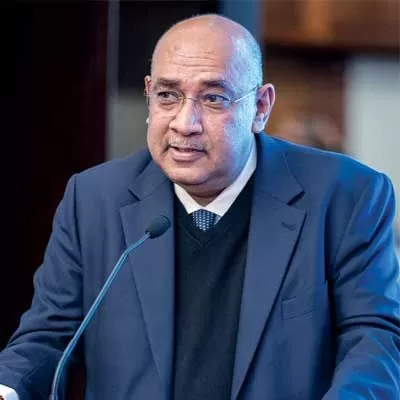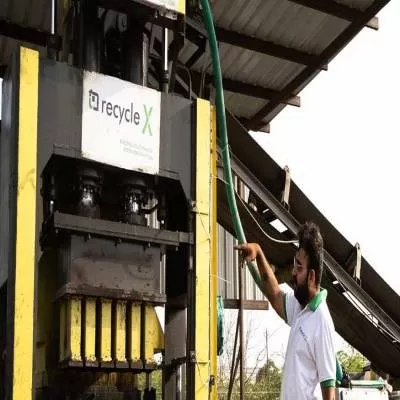- Home
- Infrastructure Urban
- ECONOMY & POLICY
- Indian Auto Industry to Invest $7 Billion in Localisation Drive by FY28
Indian Auto Industry to Invest $7 Billion in Localisation Drive by FY28
The Automotive Component Manufacturers Association (ACMA) disclosed that these investments are expected to be made between fiscal years 2024 and 2028. Already, the industry has embarked on more than 500 localisation projects across 11 key component categories, including drive transmissions, steering, engines, electricals, and body chassis. These projects, undertaken at an investment of over Rs 30 billion, aim to significantly reduce net imports, doubling the target to about 5.8% in the two years leading to fiscal year 2022.
Efforts are underway to further increase net localisation by 16-20% over the following five years until fiscal year 2027. Notable projects include reducing imports of airbags, electronic stability control units, and ventilator fan systems. Plans to deepen localisation of automatic transmissions, power control units, high-strength steel, and combined charging systems are also on the agenda.
These initiatives are critical, as more than 75% of auto parts imported into the country comprise these components. Besides reducing imports, the industry aims to establish India as an export hub for advanced auto components.
Shradha Suri Marwah, president of ACMA, emphasized the importance of building resilient supply chains by reducing overdependence on any particular country or geography. He expressed confidence that with further investments in design, development, and new-age technologies, including electronics and EV components, India will not only reduce imports but also become a significant net foreign exchange earner.
Despite China's dominance in auto parts supplies to India, its market share has declined slightly, making room for increased localisation efforts. The localisation programs, along with the government's Rs 250-billion production-linked incentive (PLI) scheme, have started yielding results, as indicated by the declining share of imports in the automotive industry's total revenues.
Vinod Aggarwal, president of the Society of Indian Automobile Manufacturers (SIAM), highlighted that despite rising customer demand for feature-rich vehicles, efforts towards localisation have led to substantial growth in industry turnover while keeping import growth in check.
As the global automotive industry undergoes a significant transition with the emergence of electric, connected, and autonomous technologies, India sees an opportune moment to enhance its competitiveness by fostering more value-addition domestically.
In conclusion, the Indian auto industry's ambitious investment plans underscore its commitment to reducing imports, strengthening local manufacturing capabilities, and seizing opportunities in the evolving global automotive landscape.
Indian automakers and their suppliers are gearing up for a substantial investment of up to $7 billion, or about Rs 580 billion, by the fiscal year 2028. This investment aims to deepen the localization of advanced components ranging from electric motors to automatic transmissions, aligning with the strategy of reducing imports and capitalizing on the 'China Plus One' approach adopted by multinational corporations. The Automotive Component Manufacturers Association (ACMA) disclosed that these investments are expected to be made between fiscal years 2024 and 2028. Already, the industry has embarked on more than 500 localisation projects across 11 key component categories, including drive transmissions, steering, engines, electricals, and body chassis. These projects, undertaken at an investment of over Rs 30 billion, aim to significantly reduce net imports, doubling the target to about 5.8% in the two years leading to fiscal year 2022. Efforts are underway to further increase net localisation by 16-20% over the following five years until fiscal year 2027. Notable projects include reducing imports of airbags, electronic stability control units, and ventilator fan systems. Plans to deepen localisation of automatic transmissions, power control units, high-strength steel, and combined charging systems are also on the agenda. These initiatives are critical, as more than 75% of auto parts imported into the country comprise these components. Besides reducing imports, the industry aims to establish India as an export hub for advanced auto components. Shradha Suri Marwah, president of ACMA, emphasized the importance of building resilient supply chains by reducing overdependence on any particular country or geography. He expressed confidence that with further investments in design, development, and new-age technologies, including electronics and EV components, India will not only reduce imports but also become a significant net foreign exchange earner. Despite China's dominance in auto parts supplies to India, its market share has declined slightly, making room for increased localisation efforts. The localisation programs, along with the government's Rs 250-billion production-linked incentive (PLI) scheme, have started yielding results, as indicated by the declining share of imports in the automotive industry's total revenues. Vinod Aggarwal, president of the Society of Indian Automobile Manufacturers (SIAM), highlighted that despite rising customer demand for feature-rich vehicles, efforts towards localisation have led to substantial growth in industry turnover while keeping import growth in check. As the global automotive industry undergoes a significant transition with the emergence of electric, connected, and autonomous technologies, India sees an opportune moment to enhance its competitiveness by fostering more value-addition domestically. In conclusion, the Indian auto industry's ambitious investment plans underscore its commitment to reducing imports, strengthening local manufacturing capabilities, and seizing opportunities in the evolving global automotive landscape.




















